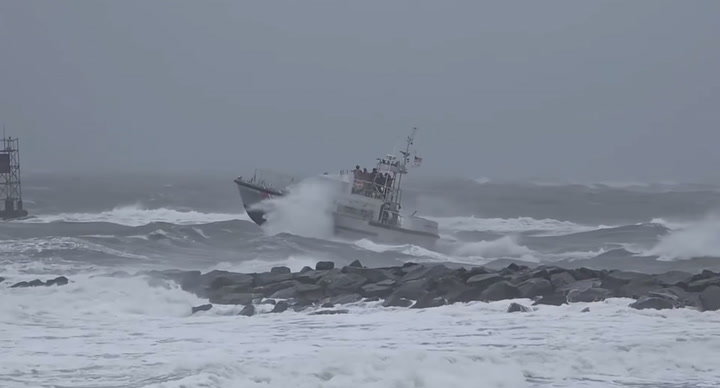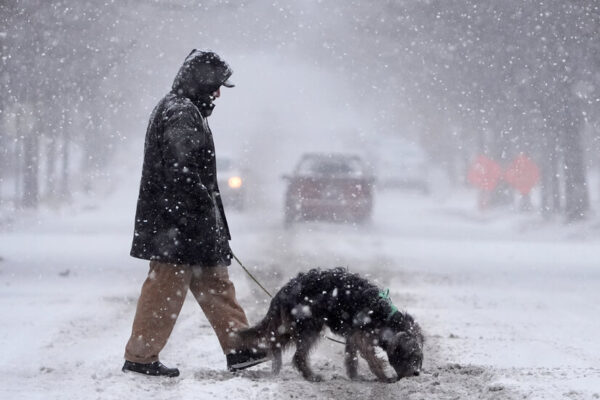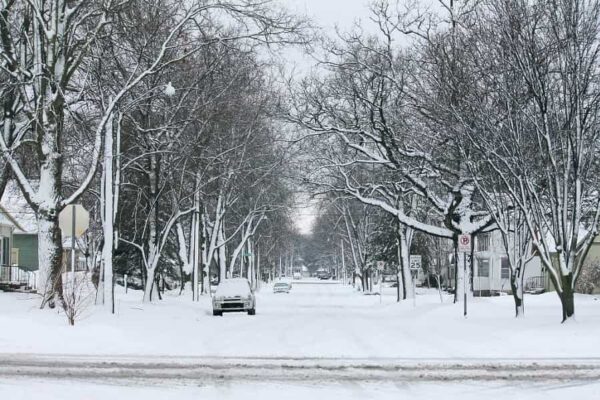Winter is coming, and if you’re like me, you’re already wondering whether it’ll be a season of cozy snow days or a battle against biting cold and icy roads. As someone who’s spent years tracking weather patterns and shoveling driveways in the Midwest, I’ve learned to respect the unpredictability of winter while finding joy in its snowy surprises. For the 2024-2025 winter season, I’m putting my faith in the flake—snow, that is—based on a mix of scientific forecasts, personal experience, and a gut feeling honed by too many winters spent scraping ice off windshields. This article dives into what we can expect from December 2024 to February 2025 across the U.S., why snow lovers should be cautiously optimistic, and how to prepare for whatever Mother Nature throws our way.
Why This Winter Matters to Me
Growing up in Minnesota, winters were more than just weather—they were a way of life. I remember the thrill of waking up to a fresh blanket of snow, knowing school might be canceled, and the dread of hearing my dad call me to help clear the driveway. Those experiences shape my love for winter’s beauty and my respect for its challenges. This year’s winter outlook, influenced by a weak La Niña, feels like a throwback to those snowy seasons, and I’m excited to share why I think snowflakes will steal the show.
Understanding La Niña’s Role
A weak La Niña is expected to develop by late fall 2024, with a 57% chance of influencing weather patterns through March 2025. La Niña shifts the jet stream northward, typically bringing wetter and colder conditions to the northern U.S. and drier, warmer weather to the South. This sets the stage for a snowy season in places like the Pacific Northwest and Northeast, which is why I’m betting on a winter filled with flakes.
Regional Winter Outlook for 2024-2025
The 2024-2025 winter is shaping up to be a tale of two climates: snowy and cold in the North, warmer and drier in the South. Let’s break it down by region to see where the snowflakes will fall and where you might need to crank up the heat instead.
Pacific Northwest: A Snow Lover’s Paradise
Expect wetter-than-average conditions and cooler temperatures in places like Washington, Oregon, and Idaho. The weak La Niña should bring heavy snowfall to ski resorts like Mt. Baker, which once recorded a jaw-dropping 95 feet of snow in a single season. If you’re planning a ski trip, this region is your best bet for powdery slopes.
Northeast and Upper Midwest: Snow Days Ahead
The Northeast, including New York, Vermont, and Maine, along with the Upper Midwest (think Minnesota and Wisconsin), is likely to see above-average snowfall. Forecasts suggest a 27% increase in snow days due to La Niña’s northerly storm track. I’m already picturing kids in Minneapolis building snow forts like I did back in the day.
Southern States: Warm and Dry, with a Twist
From Texas to the Gulf Coast, expect warmer-than-average temperatures and below-average precipitation. However, January 2025 could bring surprises, as last winter saw snow in places like Pensacola and New Orleans. Keep an eye on local forecasts if you’re in the South—those rare snowflakes might catch you off guard.
Central U.S.: Icy and Unpredictable
The Central U.S., including Kansas, Missouri, and Illinois, may face ice storms rather than heavy snow. La Niña’s influence here is less clear, but the potential for icy conditions means drivers should be ready for slick roads. I learned this the hard way one winter when my car did a 360 on an icy highway—stock up on salt and sand early
Comparing This Winter to Last Year
Last winter’s El Niño brought a dry start and mixed conditions, with many ski resorts struggling until late-season snow saved the day. This year’s La Niña promises a different story, with a stronger chance of early snow in the North and less drought relief in the South. Here’s a quick comparison:
| Factor | 2023-2024 (El Niño) | 2024-2025 (La Niña) |
|---|---|---|
| Northern U.S. | Dry early, snowy late | Wetter, snowier throughout |
| Southern U.S. | Mild, some late snow | Warmer, drier, occasional snow surprises |
| Precipitation | Below average (5.87 inches) | Above average in North, below in South |
| Temperature | Warmer (34.1°F nationally) | Cooler in North, warmer in South |
This shift to La Niña gives me confidence that snow lovers in the North will have plenty to celebrate, while Southerners should brace for a milder season with fewer flakes.
Why I Have Faith in the Flake
My optimism about snow this winter isn’t just wishful thinking—it’s grounded in science and a lifetime of watching weather patterns. La Niña’s track record of delivering snow to the northern U.S. is strong, and even a weak La Niña can pack a punch. Plus, the Farmers’ Almanac and NOAA both predict above-average snowfall in key regions, which aligns with my own observations of early fall cooling trends. But it’s not just data that fuels my faith. There’s something magical about the first snowfall, the way it quiets the world and turns a gray day into a winter wonderland. I’m betting on that magic this season.
The Science Behind Snow Predictions
Snow forecasts rely on complex models that factor in ocean temperatures, jet stream patterns, and atmospheric oscillations like the Arctic Oscillation (AO). NOAA’s Climate Prediction Center uses these models to predict wetter conditions in the northern tier, which often translates to snow when temperatures drop. While no forecast is foolproof, the consistency across sources like NOAA and the Farmers’ Almanac gives me confidence.
A Personal Snow Story
I’ll never forget the winter of 2011 in Minnesota, when a single storm dumped 17 inches of snow overnight. My brother and I spent the day sledding down a hill in our backyard, laughing until our cheeks hurt. That’s the kind of winter I’m hoping for this year—one that brings joy, not just shoveling. If the forecasts hold, we might just get it.
Preparing for Winter 2024-2025
Whether you’re dreaming of snow angels or dreading icy commutes, preparation is key. Here’s how to get ready for the season, based on my own trial-and-error over the years:
- Stock Up Early: Grab snow shovels, salt, and winter tires before the first storm hits. I learned this lesson after a mad dash to the hardware store during a blizzard—trust me, it’s not fun.
- Winterize Your Home: Insulate pipes, check your heating system, and keep extra blankets handy. A frozen pipe in 2014 cost me hundreds in repairs—don’t make my mistake.
- Emergency Kit for Your Car: Include a blanket, flashlight, water, and snacks. I keep a small shovel in my trunk after getting stuck in a snowbank for hours.
- Stay Informed: Use apps like AccuWeather or NOAA Weather Radar for real-time updates. They’ve saved me from being caught unprepared more than once.
Best Tools for Winter Prep
For those looking to gear up, here are some top-rated tools and resources:
- Snow Blowers: The Snow Joe Cordless Snow Blower is lightweight and perfect for smaller driveways. For heavier snow, try the Toro Power Max.
- Weather Apps: AccuWeather offers detailed snow forecasts, while Weather Underground provides hyper-local predictions.
- Winter Tires: Bridgestone Blizzak tires are a favorite for icy roads, based on my own experience navigating Minnesota winters.
You can find these at retailers like Amazon or Home Depot.
Pros and Cons of a Snowy Winter
A snowy winter is a double-edged sword—beautiful but demanding. Here’s a quick look at the ups and downs:
Pros:
- Great for winter sports like skiing and snowboarding.
- Creates a festive, cozy atmosphere for holidays.
- Boosts local economies in ski towns.
Cons:
- Shoveling and plowing can be time-consuming and exhausting.
- Icy roads increase accident risks.
- Higher heating bills in colder regions.
People Also Ask (PAA)
Here are answers to common questions about the 2024-2025 winter, pulled from Google’s PAA section:
Will the 2024-2025 winter be cold?
NOAA predicts cooler-than-average temperatures in the Pacific Northwest and northern Plains, with warmer conditions in the South and along the Gulf Coast. The weak La Niña will likely bring colder snaps, especially in January.
Which areas will get the most snow?
The Northeast, Upper Midwest, and Pacific Northwest are expected to see above-average snowfall, with resorts like Whistler Blackcomb and Mt. Baker likely to benefit.
How reliable are winter forecasts?
Long-range forecasts from NOAA and the Farmers’ Almanac are about 70-80% accurate for broad trends but can’t predict specific storms. Always check short-term local forecasts as winter nears.
Could there be a polar vortex this winter?
A wobbly polar vortex could bring cold air outbreaks, especially in February 2025, according to early forecasts. This might mean sudden snowstorms in the Midwest or Northeast.
FAQ Section
Q: What is La Niña, and how does it affect winter weather?
A: La Niña is a climate pattern with cooler-than-average Pacific Ocean temperatures, leading to a northerly jet stream. This brings wetter, colder weather to the northern U.S. and drier, warmer conditions to the South, increasing snow chances in places like the Northeast.
Q: Where can I get reliable winter forecasts?
A: Check trusted sources like NOAA’s Climate Prediction Center or The Old Farmer’s Almanac. Apps like AccuWeather are great for real-time updates.
Q: What are the best tools for snow removal?
A: For small areas, a sturdy shovel like the Fiskars Steel D-Handle is ideal. For larger spaces, consider a snow blower like the Snow Joe or Toro, available at Home Depot.
Q: How can I prepare my car for winter driving?
A: Equip your car with winter tires (e.g., Bridgestone Blizzak), keep an emergency kit with blankets and food, and check your battery and wipers. I’ve relied on these tips to stay safe on icy roads.
Q: Will the South see any snow this winter?
A: While the South is expected to be drier, January 2025 could bring rare snow to places like Texas or Alabama, as seen last winter in Pensacola. Stay alert for updates.
Final Thoughts
The 2024-2025 winter is poised to deliver a snowy spectacle in the northern U.S., thanks to a weak La Niña and a restless atmosphere. As someone who’s seen winter’s highs and lows—from epic snowball fights to treacherous commutes—I’m excited for the flakes to fly. Whether you’re in the snowy Northwest or the milder South, preparation is key. Stock up, stay informed, and embrace the season’s magic. Here’s to a winter that’s more wonderland than worry—let’s make the most of those snowflakes!





